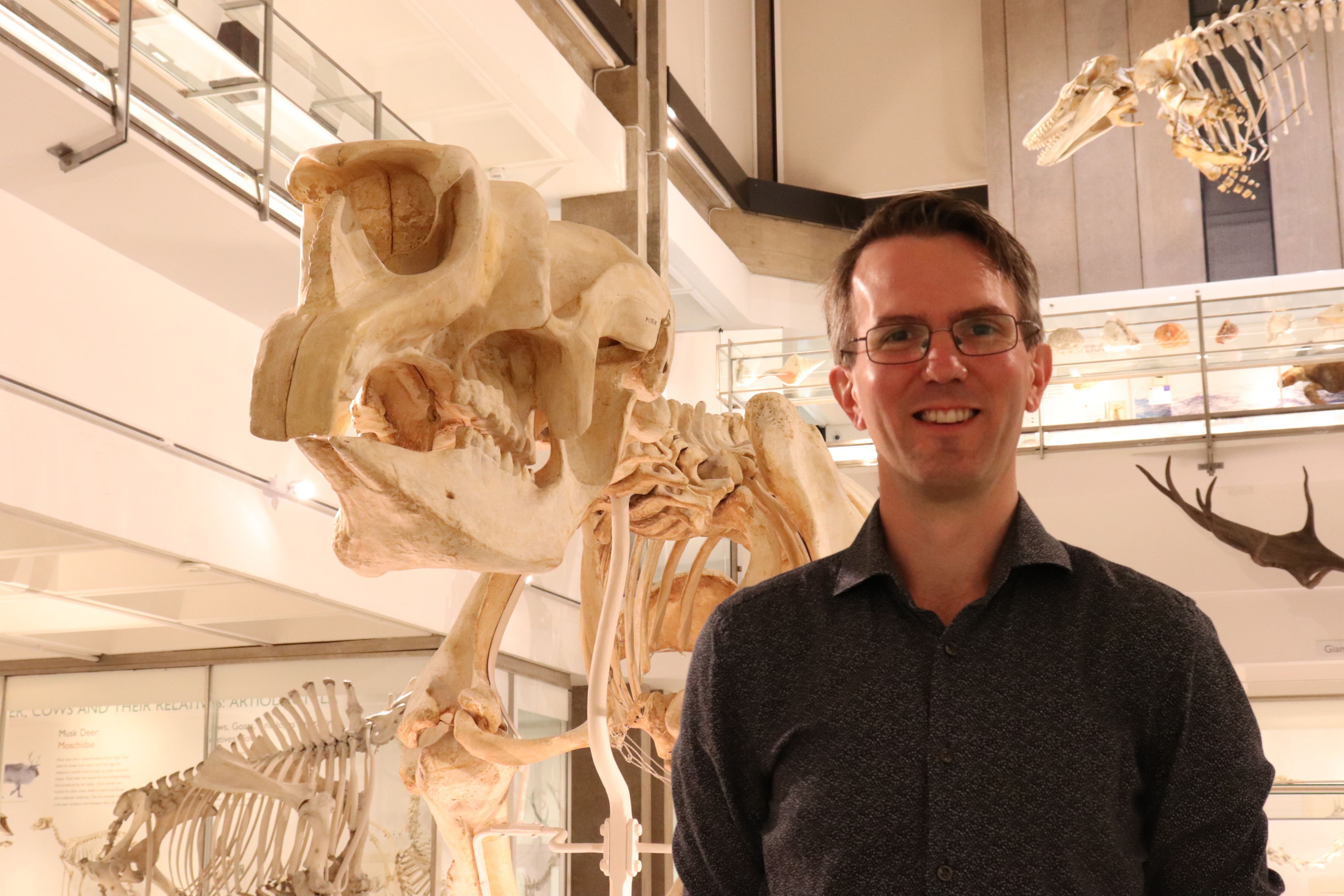#CamFest Speaker Spotlight
Jack Ashby

Jack Ashby, Assistant Director at the Museum of Zoology, chats about his love of Australian mammals and why they’re so amazing ahead of his two events: Don’t call me weird: Australia’s amazing mammals (26 March) and Platypus matters: the extraordinary story of Australian mammals (29 March)
What drew you to researching Australian mammals?
When I was a student, each week our classes in the University Museum of Zoology (where I now work) focused on a different group of animals. We would study the specimens to understand their key features, adaptations and evolutionary relationships. When we got to platypuses, my mind was absolutely blown. It was clear to me then that nothing more incredible has ever evolved; and 20 years later I’m only more convinced that this is true. From there, platypuses acted as gateway to the marvels of all Australian mammals.
What makes them so amazing and so different than any other animals on Earth?
Platypuses and their spiky relatives the echidnas are the only mammals that lay eggs (and they produce milk without nipples). Platypuses are one of a tiny number of mammals that can detect the electric fields given off by their prey: with their eyes and ears closed underwater, electro-receptors in their bills sense the electric signals that control animal muscles (including their heartbeats), enabling them to eat almost their bodyweight in crayfish, worms, snails and fishes every day. Male platypuses are also one of the only venomous mammals. No other mammal on earth combines all those features.
Do you have a favourite? If so, why?
It’s probably obvious by now that the answer is the platypus.
But wombats come a close second – they can crush a predator to death with their reinforced backsides; and they poop cubes. They’re also extremely intelligent.
What has surprised you most to discover during your research?
I could list any number of amazing adaptations that make each Australian mammal a perfectly evolved species in its ecosystem, from their astonishingly efficient reproductive systems to their jaw-dropping feeding habits, but what surprises me the most is how these animals are represented to the wider world. Despite being perfectly honed products of evolution, capable of amazing feats, they are consistently described as “weird”, “bizarre”, “curious” or even “primitive”. This is extremely unhelpful (and inaccurate) for many reasons, not least because it incorrectly implies they are at fault for their current extinction rate: Australia has lost more species of mammal since Europeans invaded than any other country.
Why do you think these amazing creatures are depicted so inaccurately in myths, stories and even in museums?
The argument I make in my book Platypus Matters: The extraordinary story of Australian mammals is that the way these species were described by European naturalists was deeply influenced by a colonial mindset that anything that seemed different to what Europeans were familiar with was automatically assumed to be inferior to it. The way that the wildlife, people and environment of Australia were represented were all deeply entwined – it oiled the colonial machine to imply that they were primitive or somehow lesser. And today, these species still carry this colonial baggage in the way they are repeatedly described as “weird and wonderful”, or even that Australian animals are particularly dangerous (they aren’t) – it’s all a subconscious hangover from these early depictions.
Do you think we can change how they’re viewed?
I hope so. We should focus on their amazing adaptations and drop the “weird” from “weird and wonderful”. Every animal is weird if you think about it.
